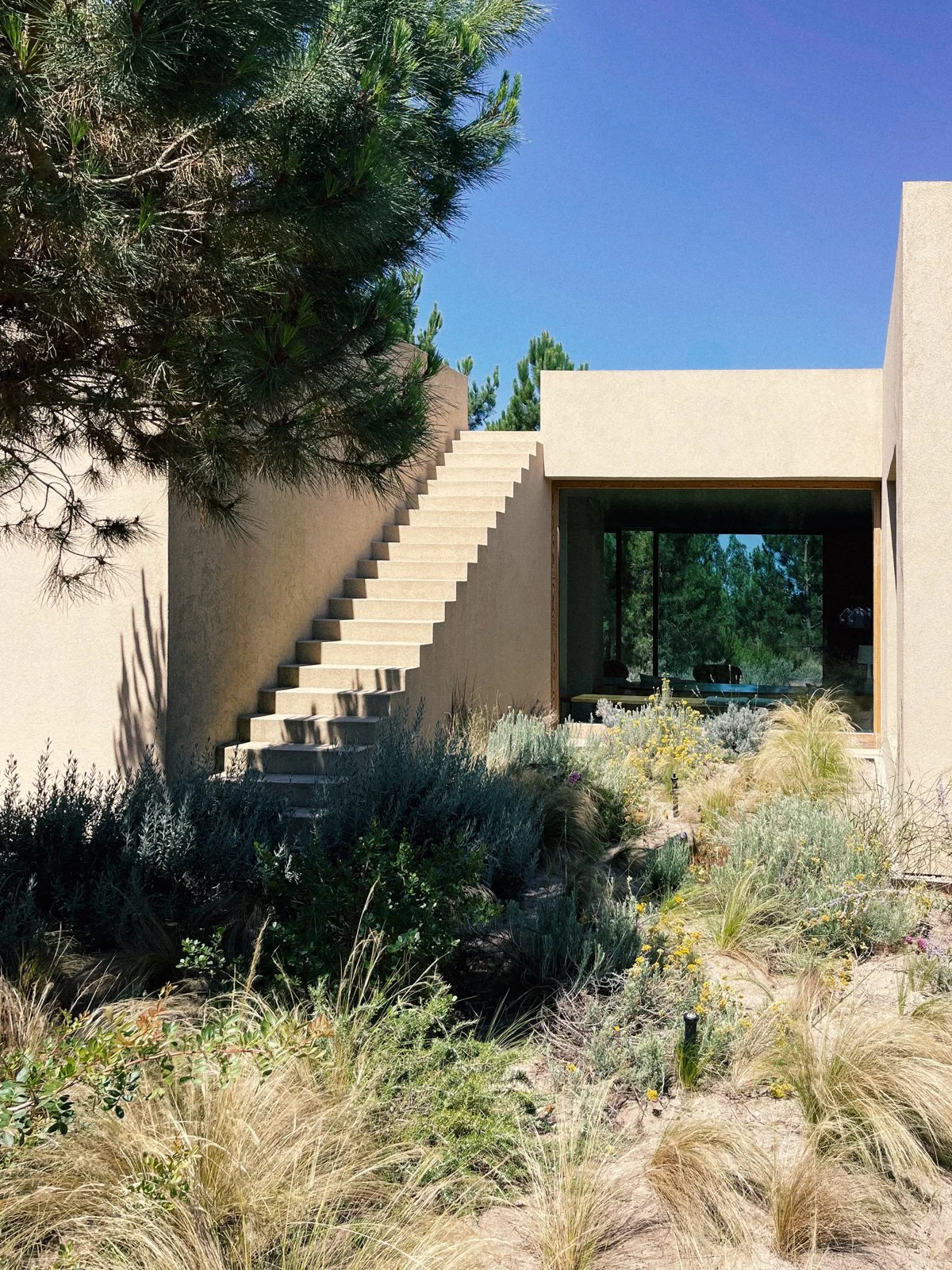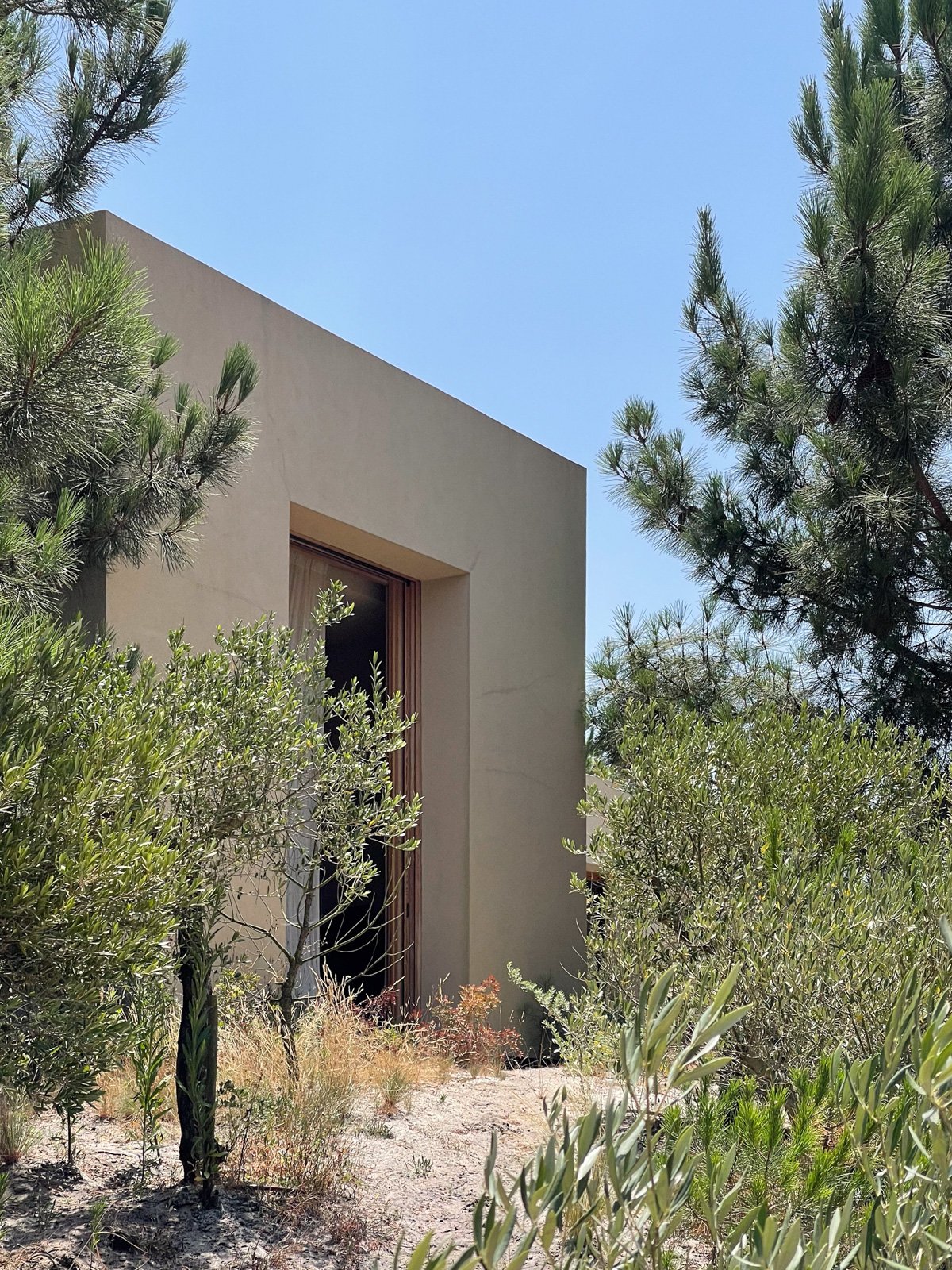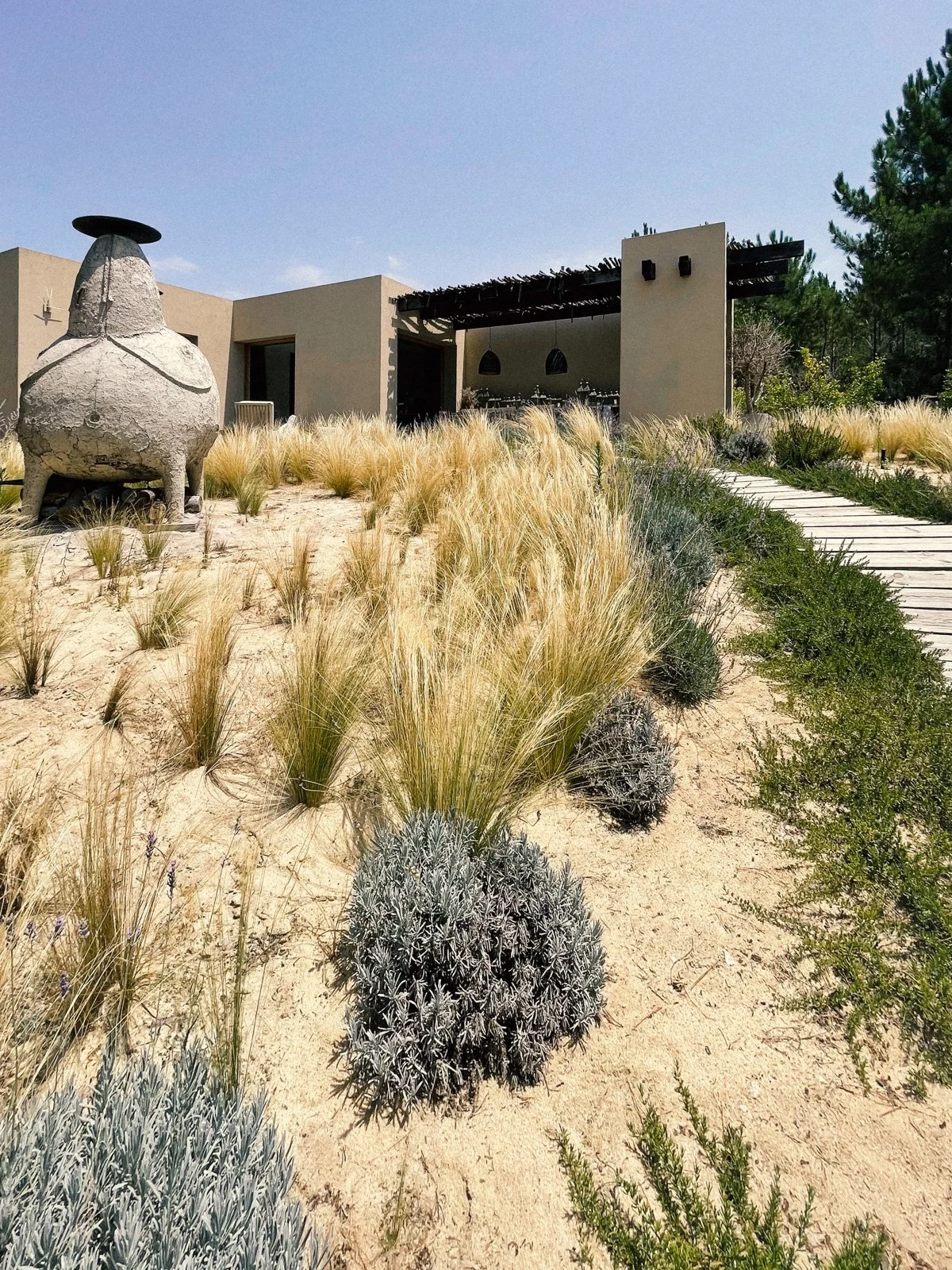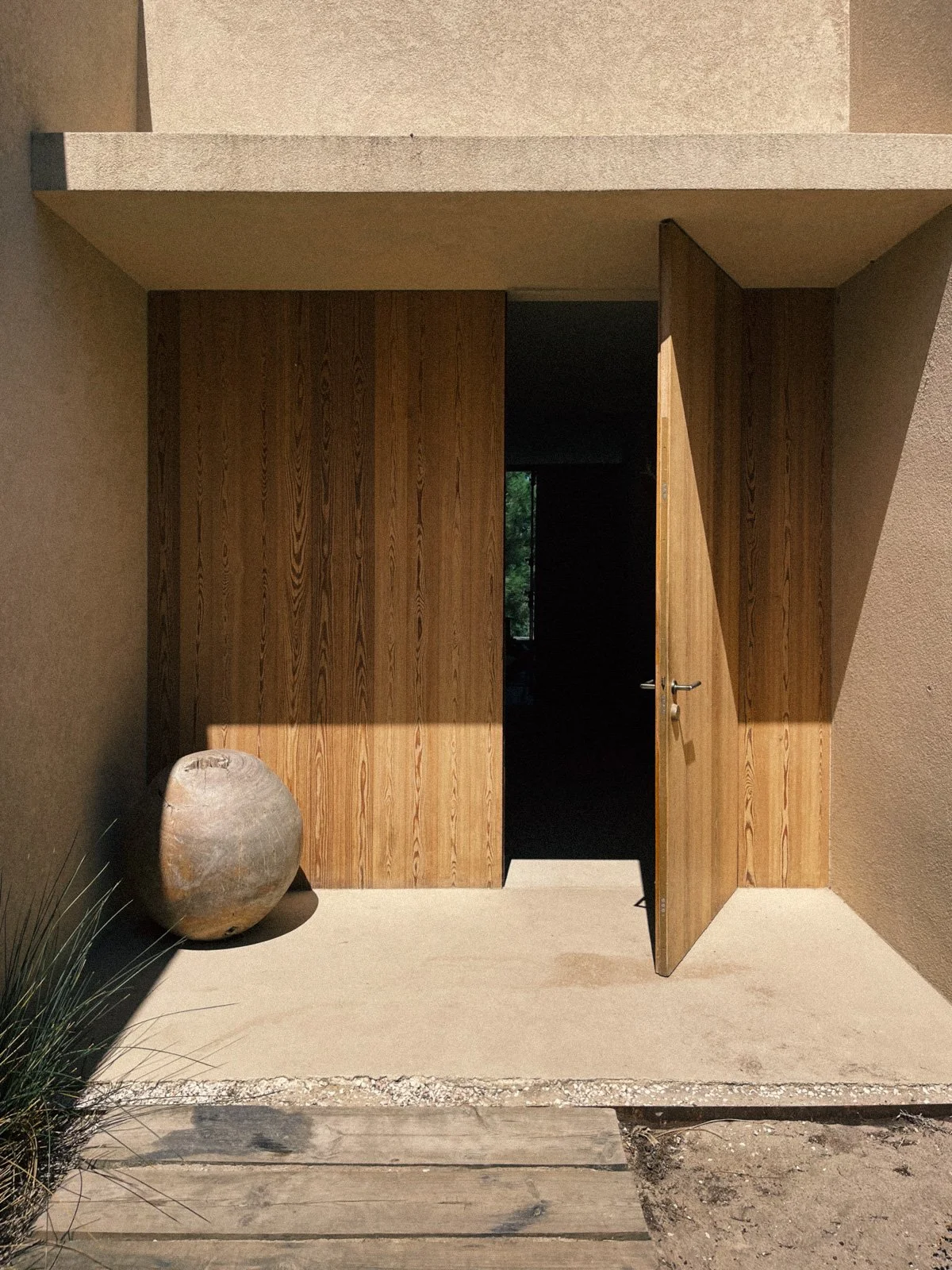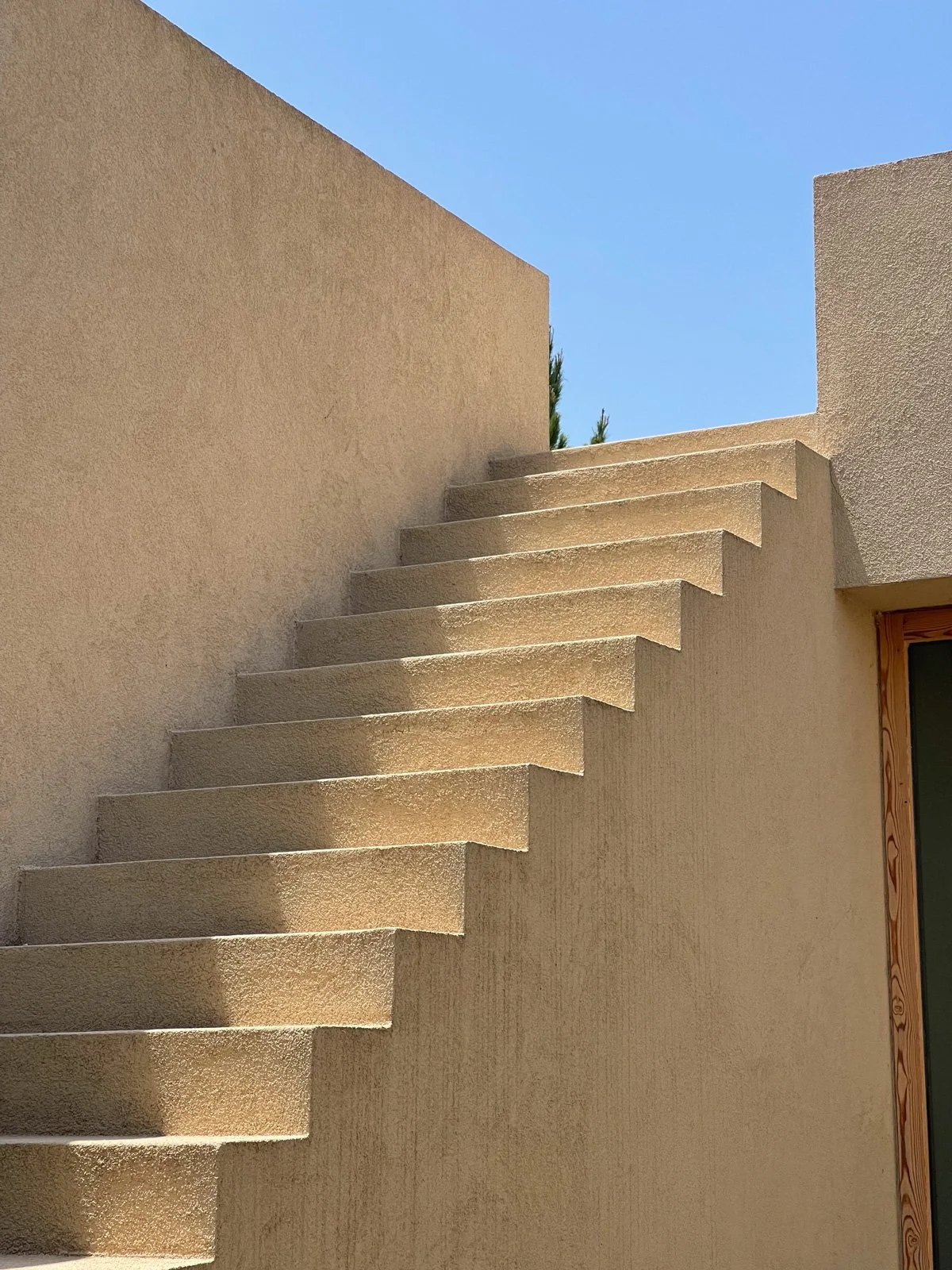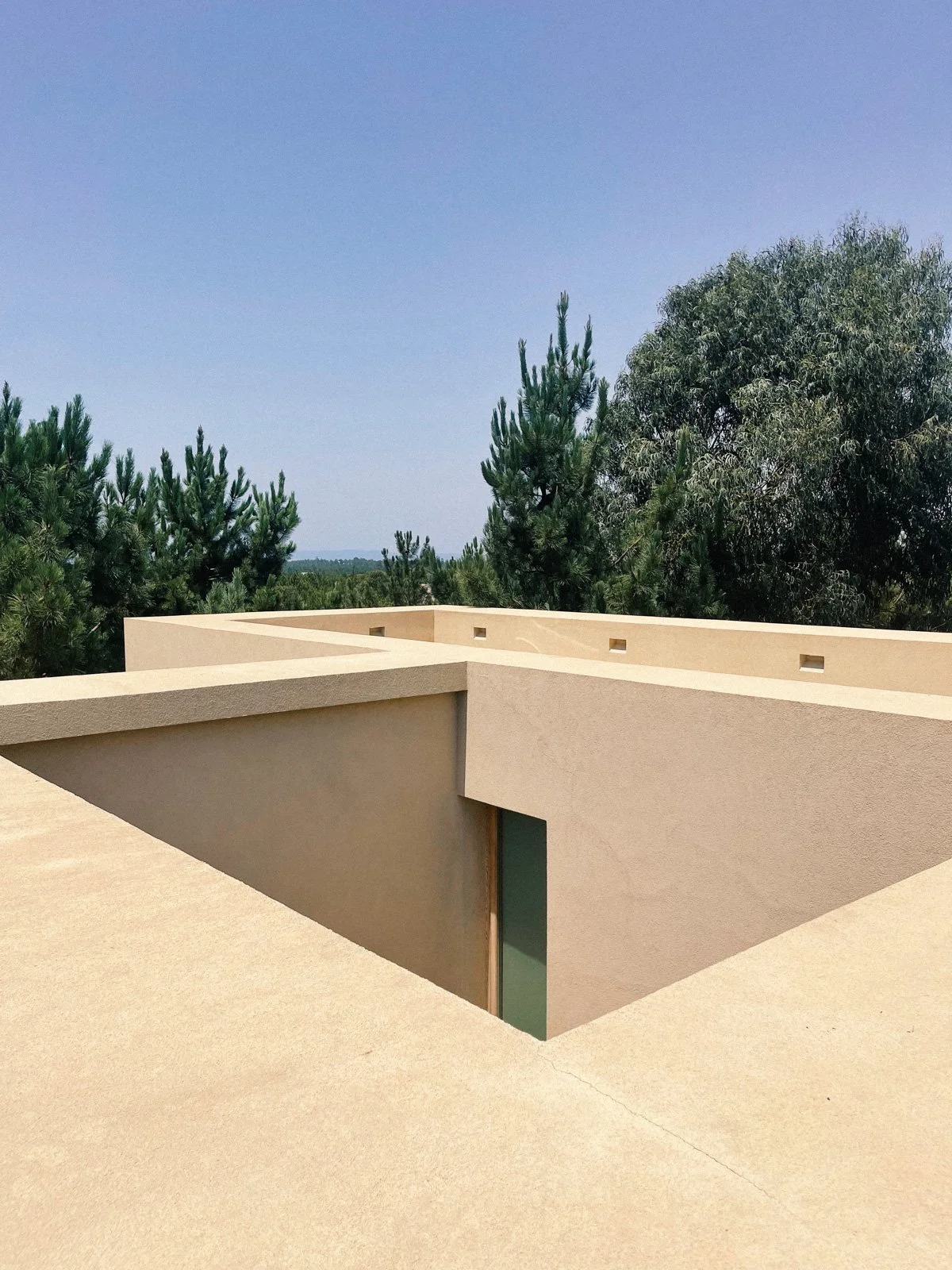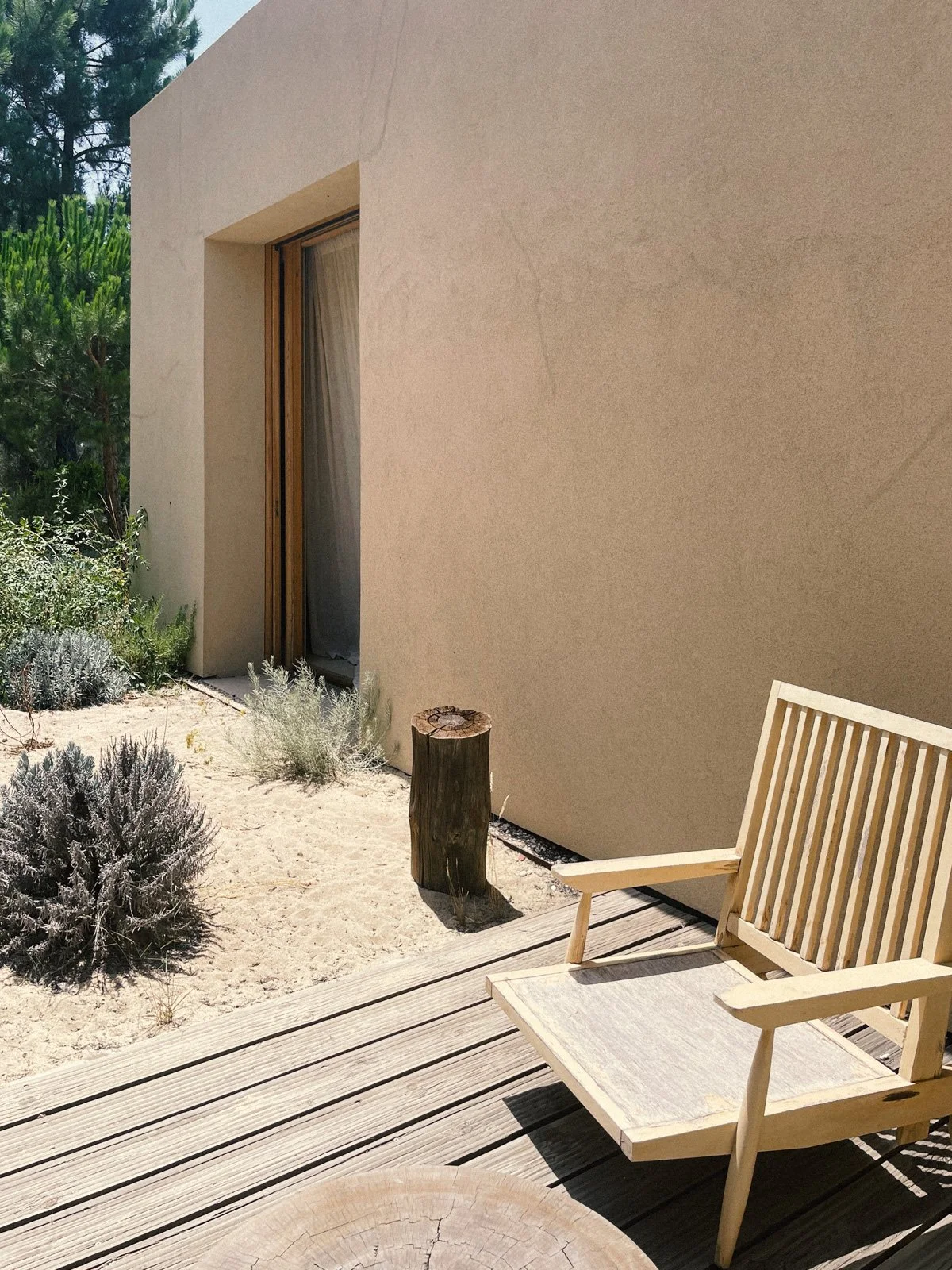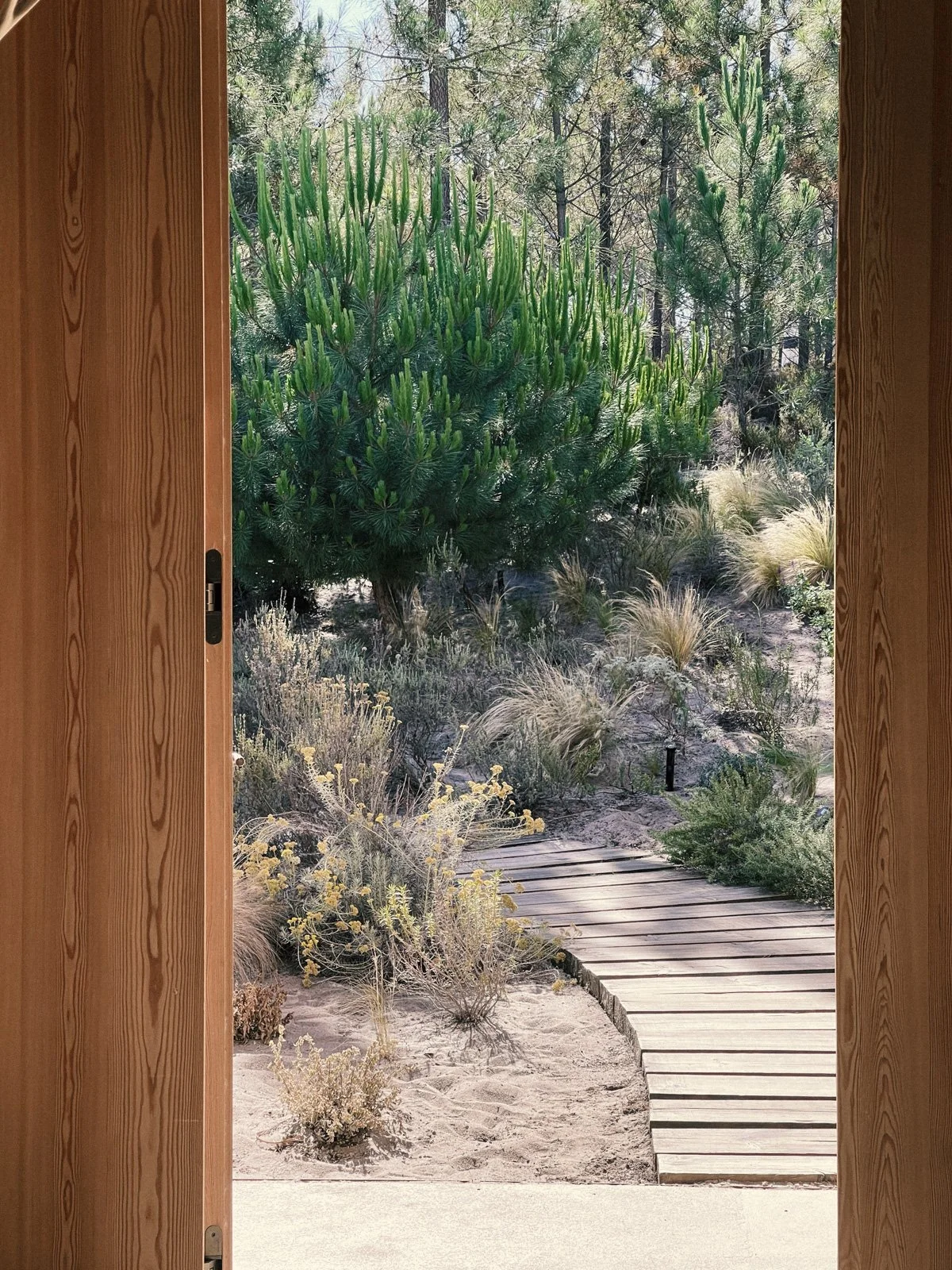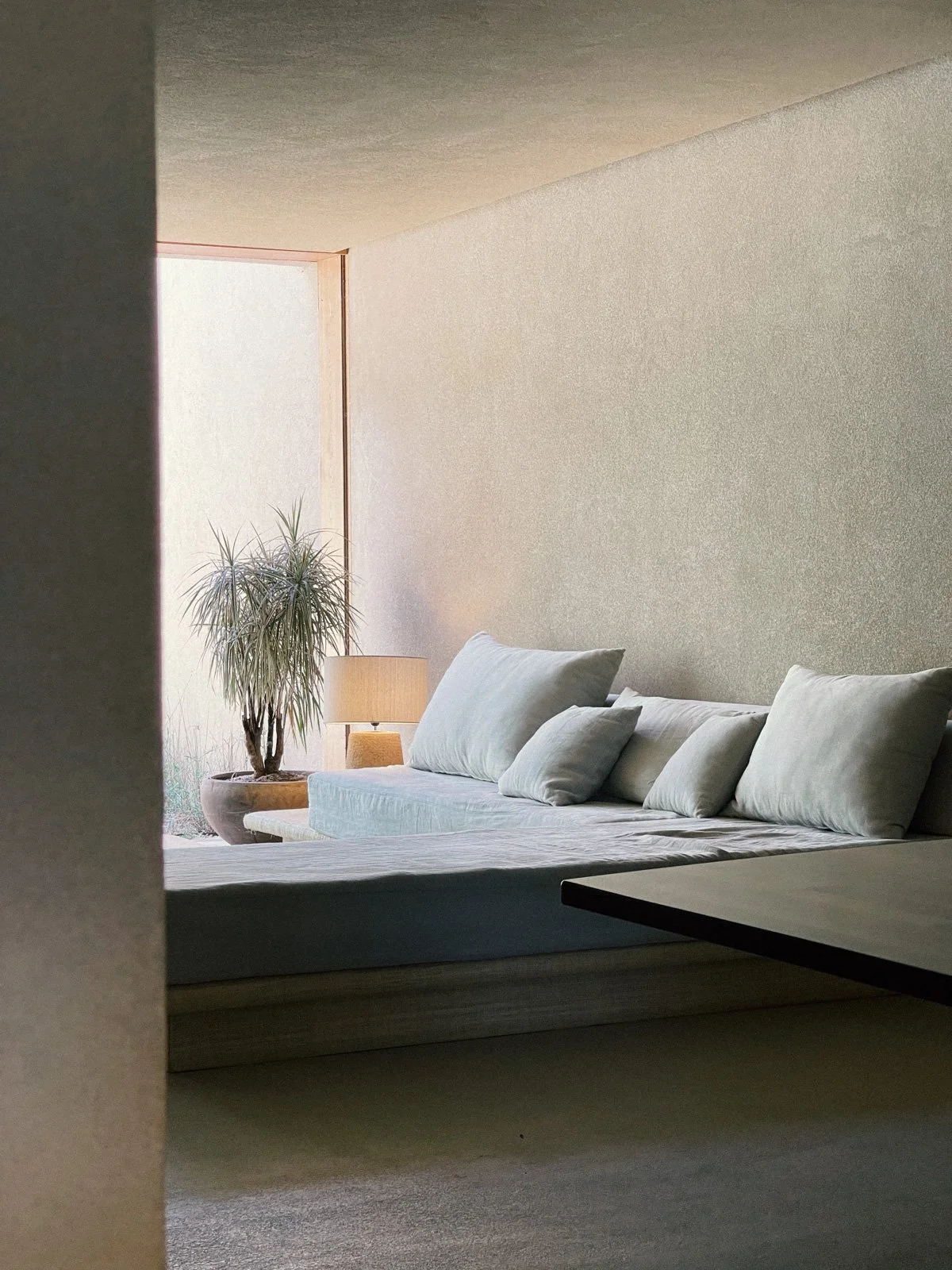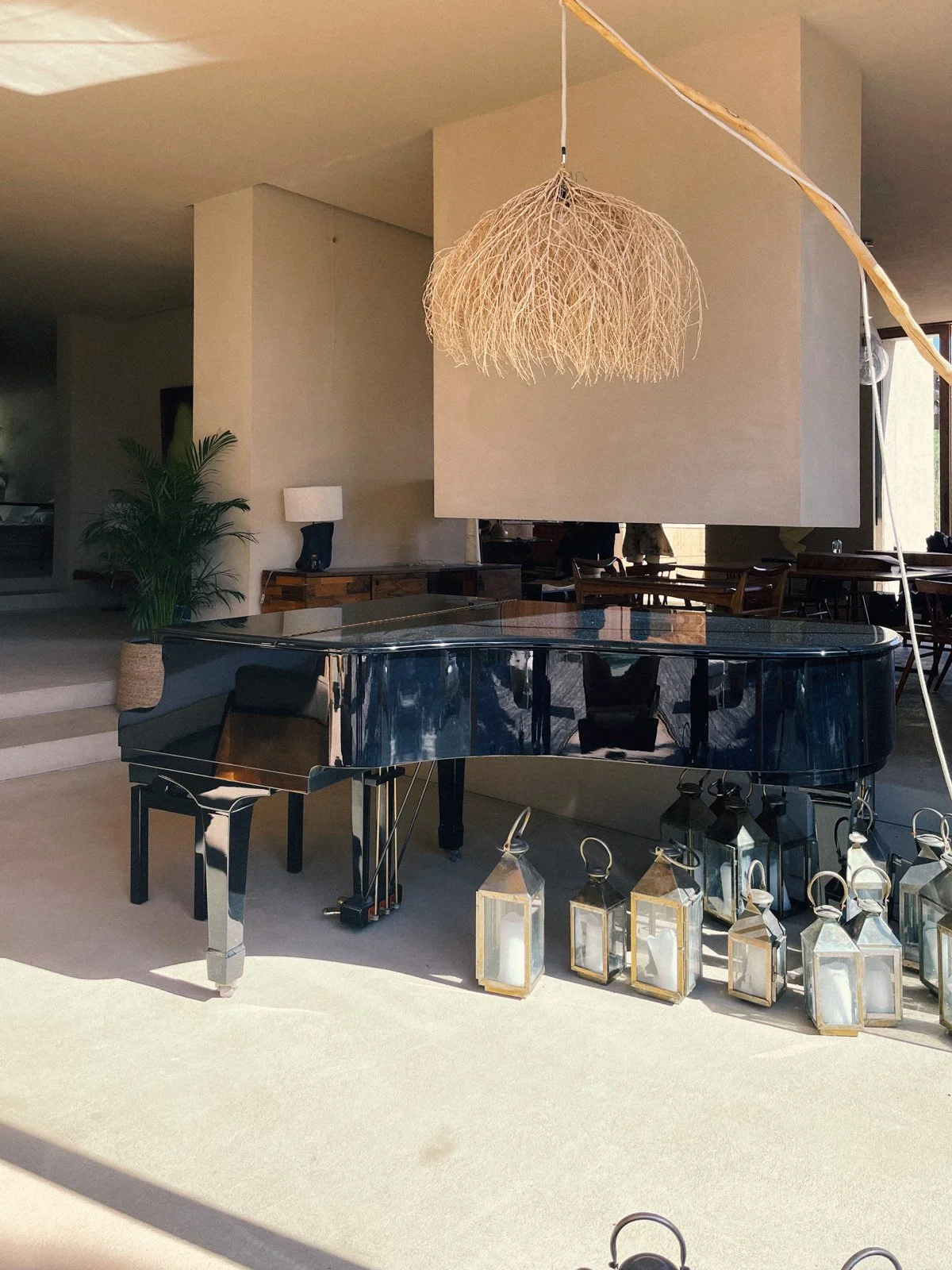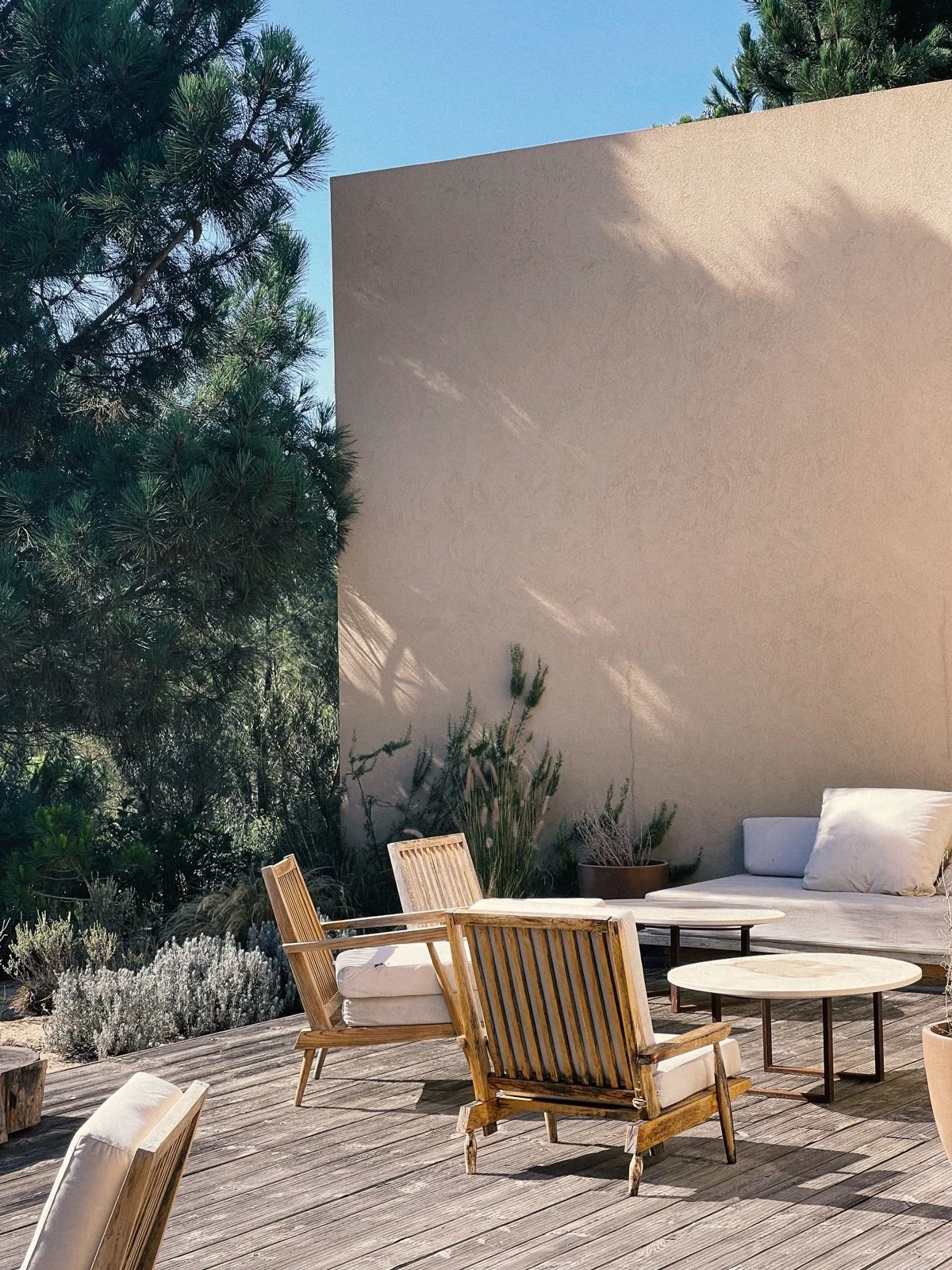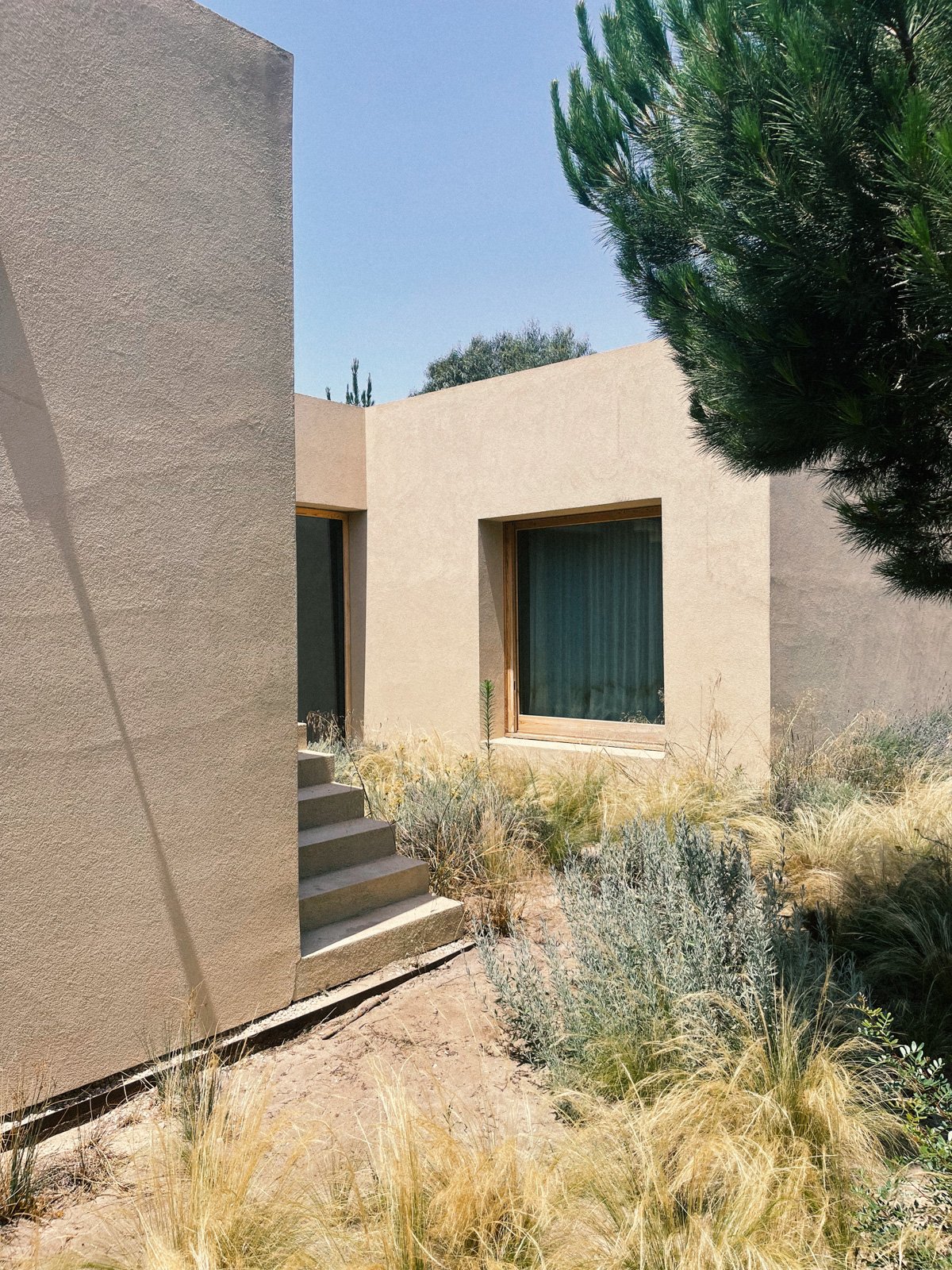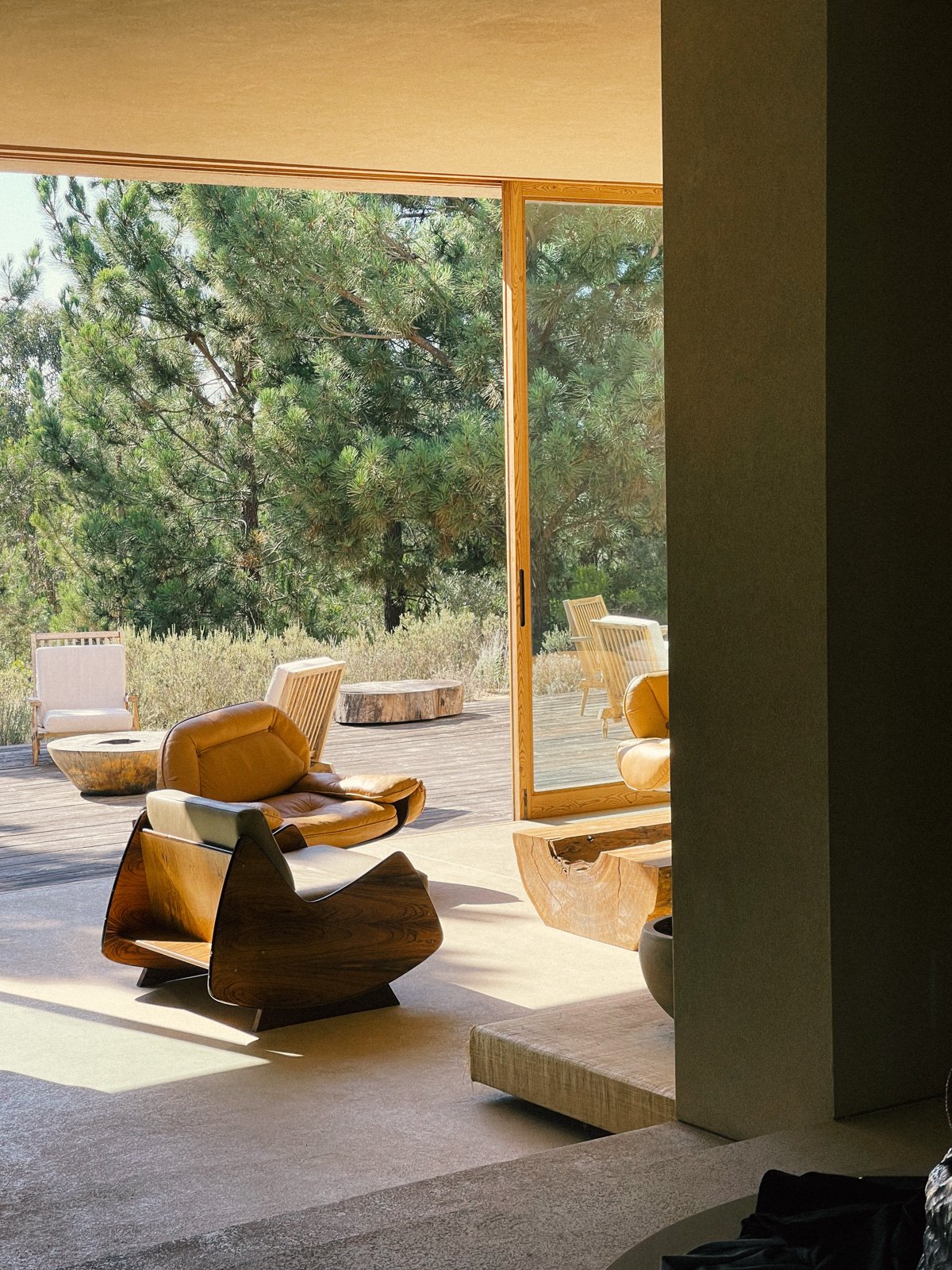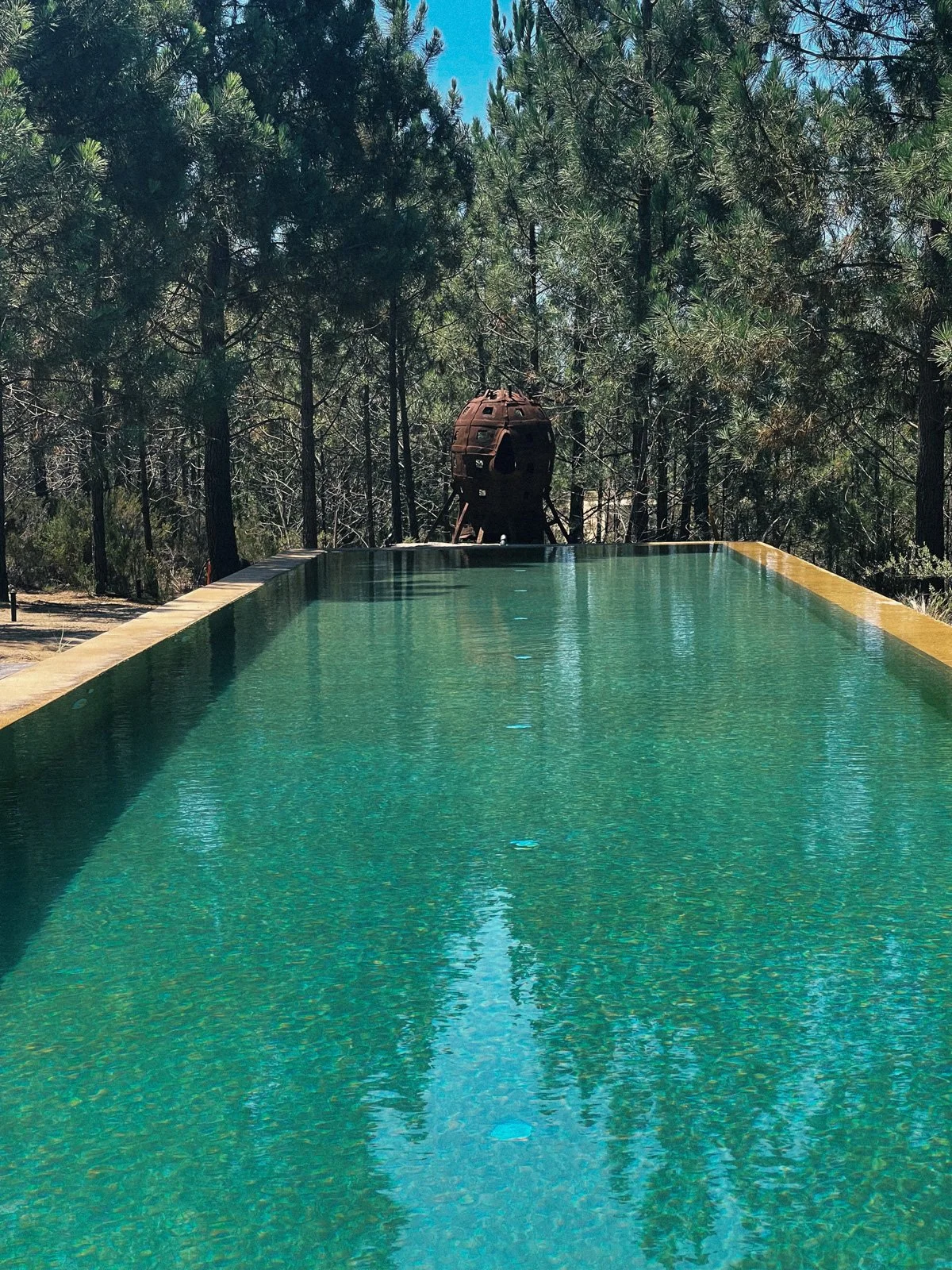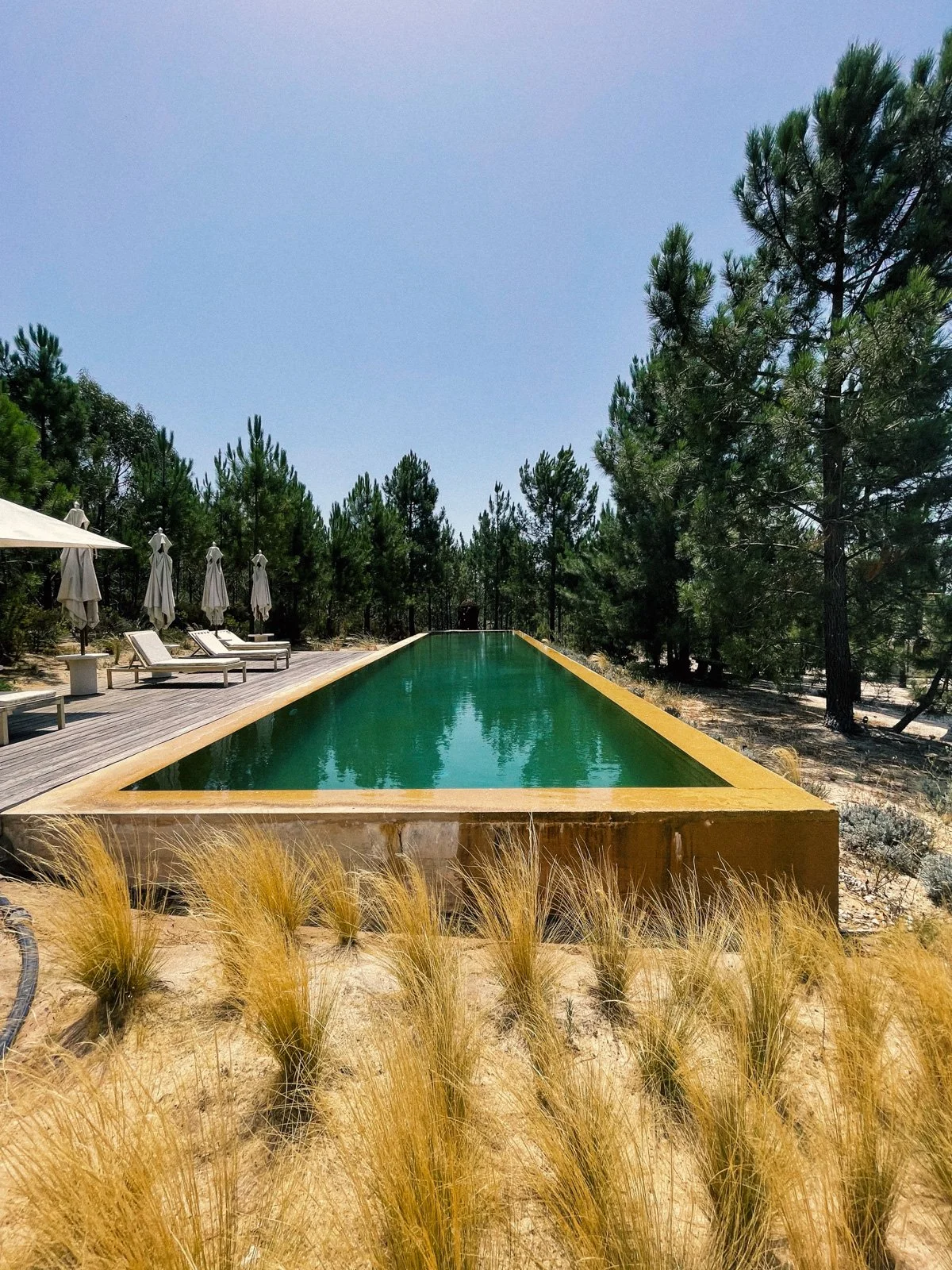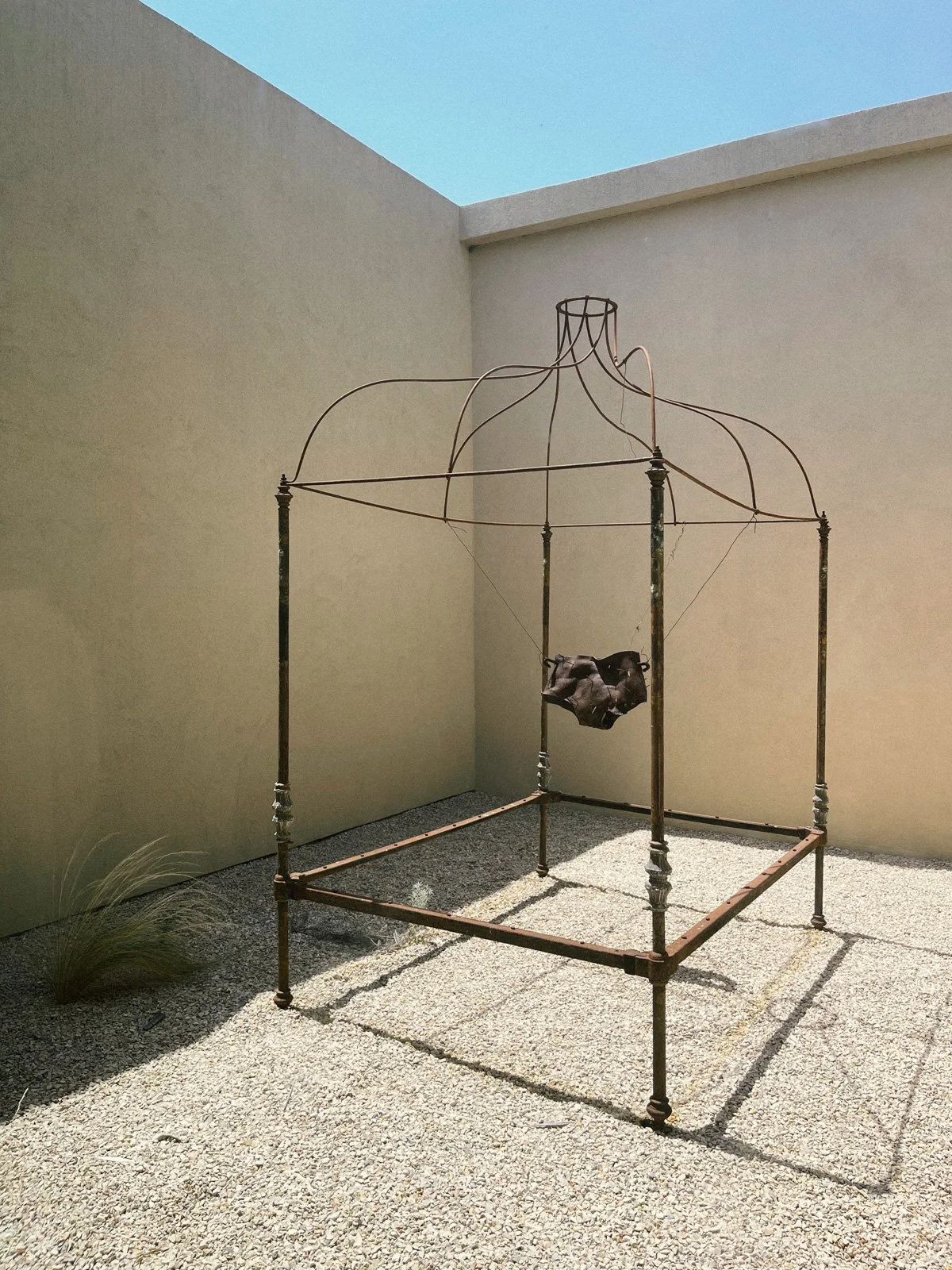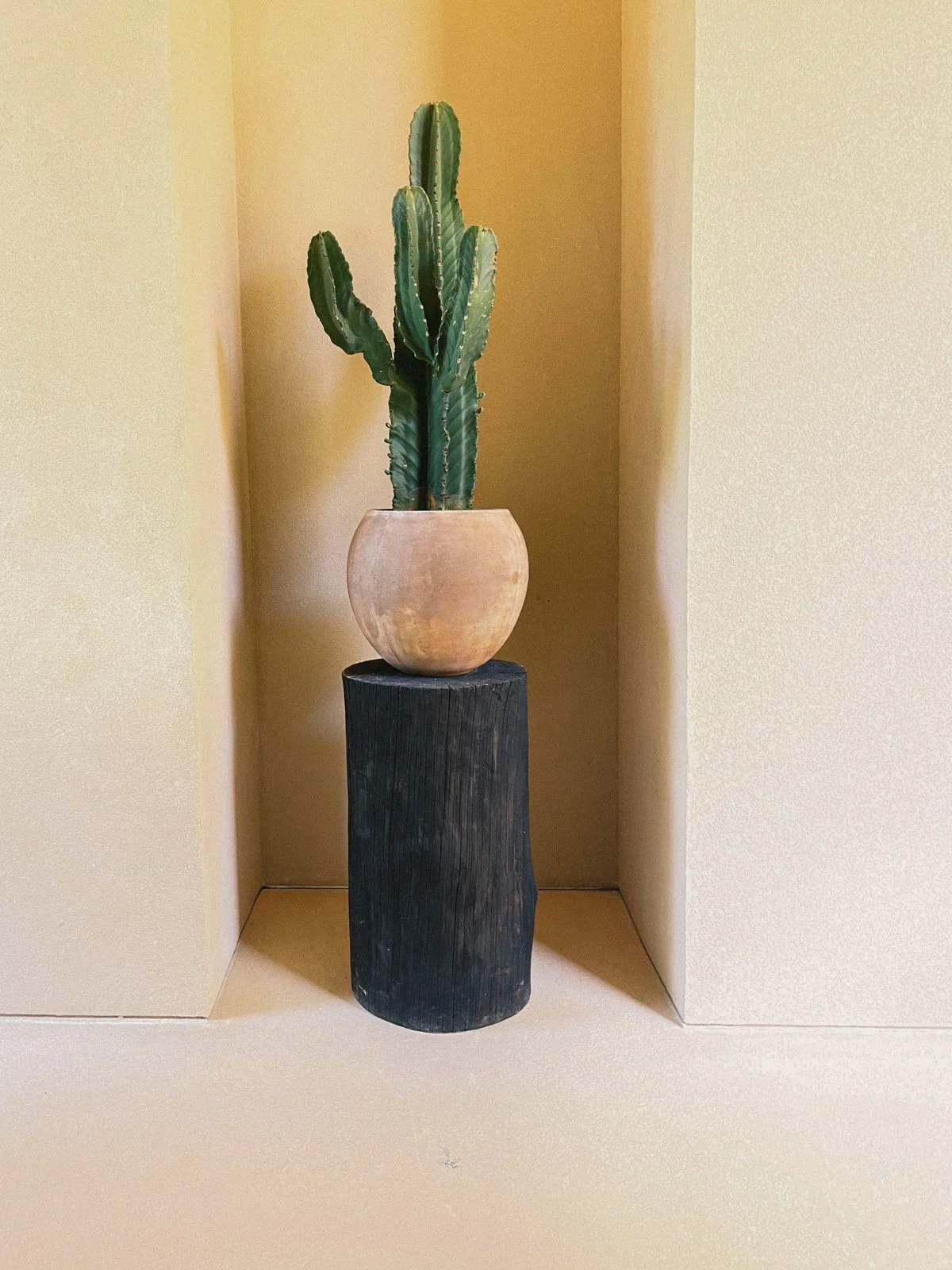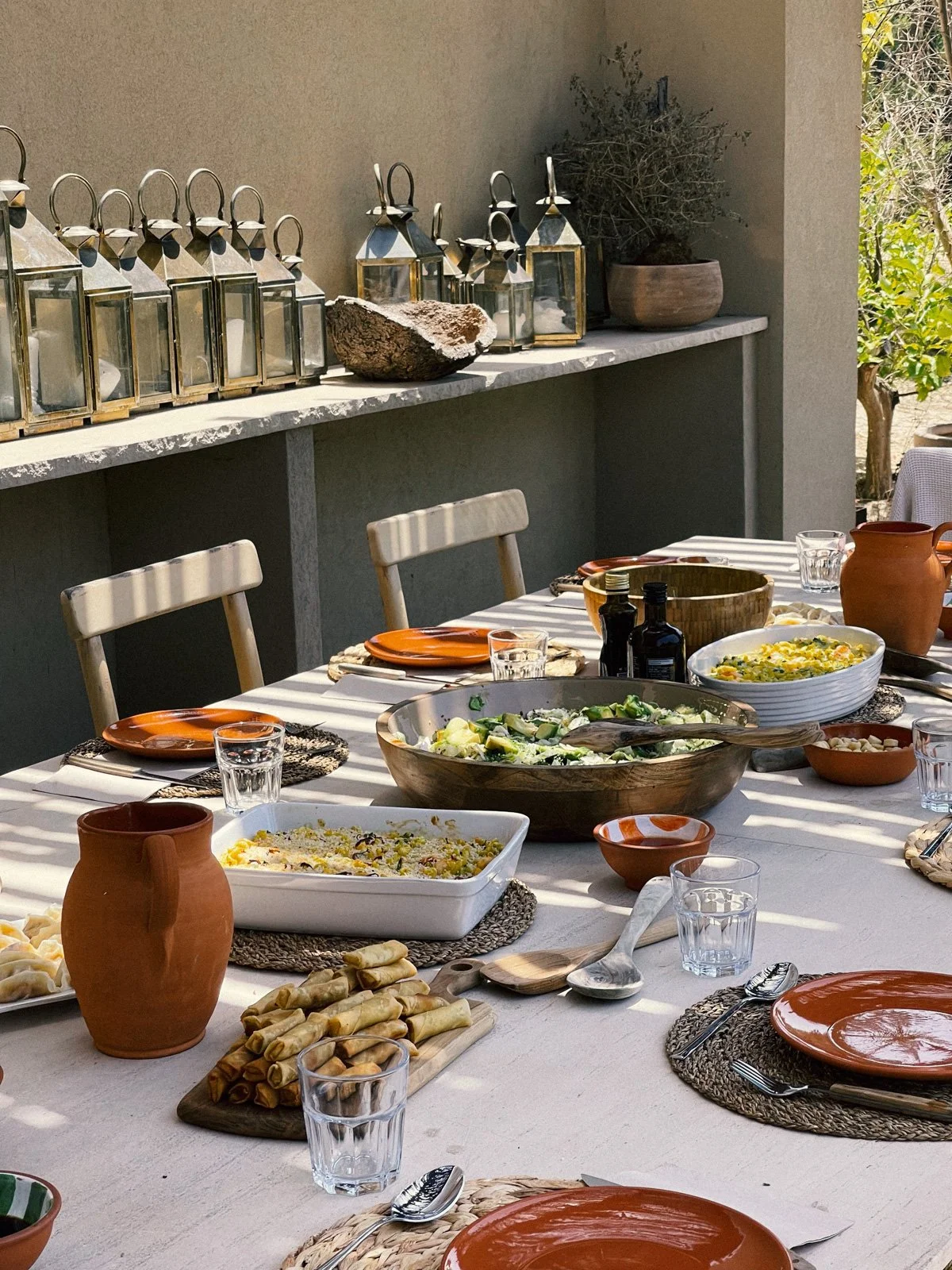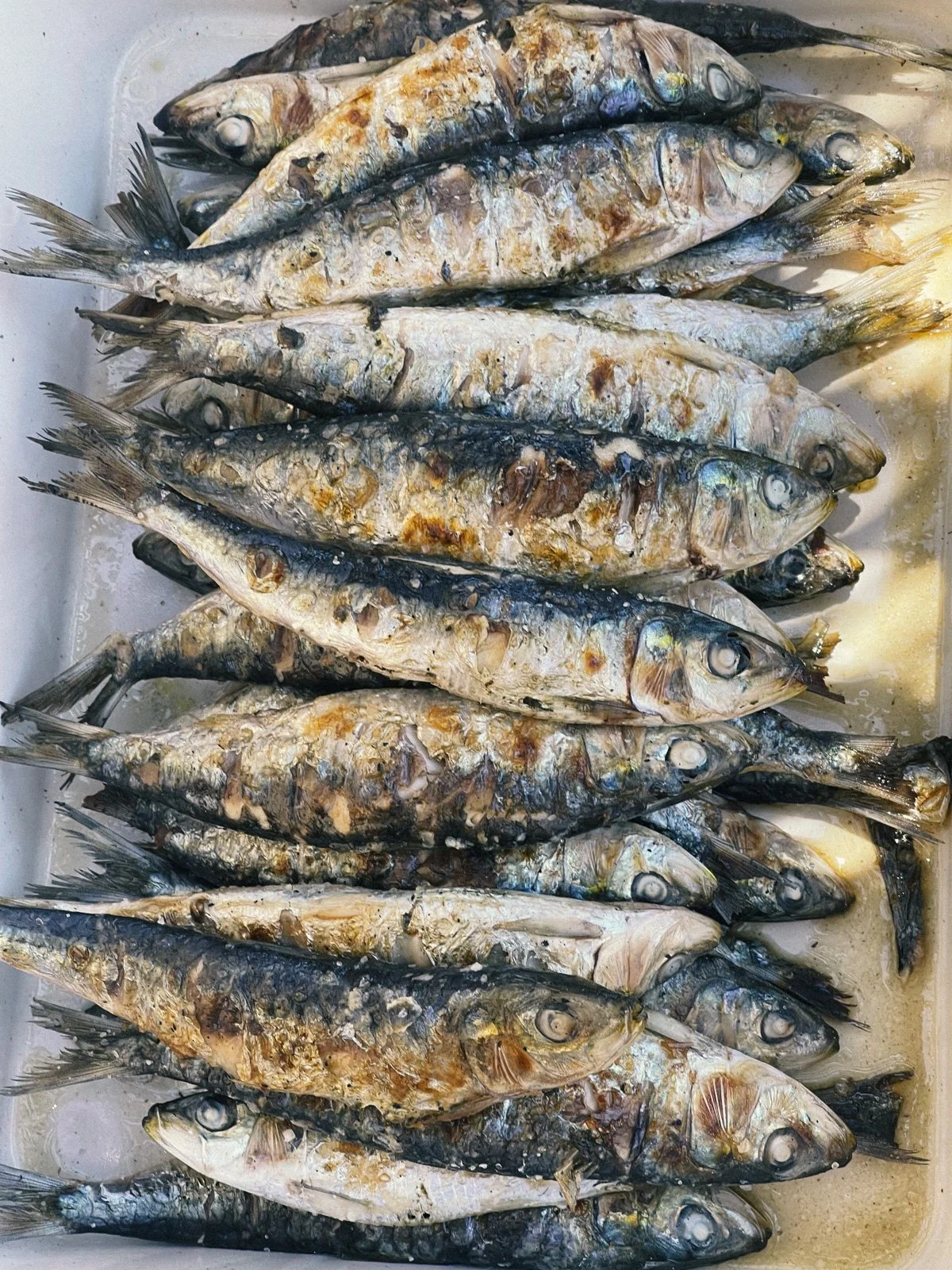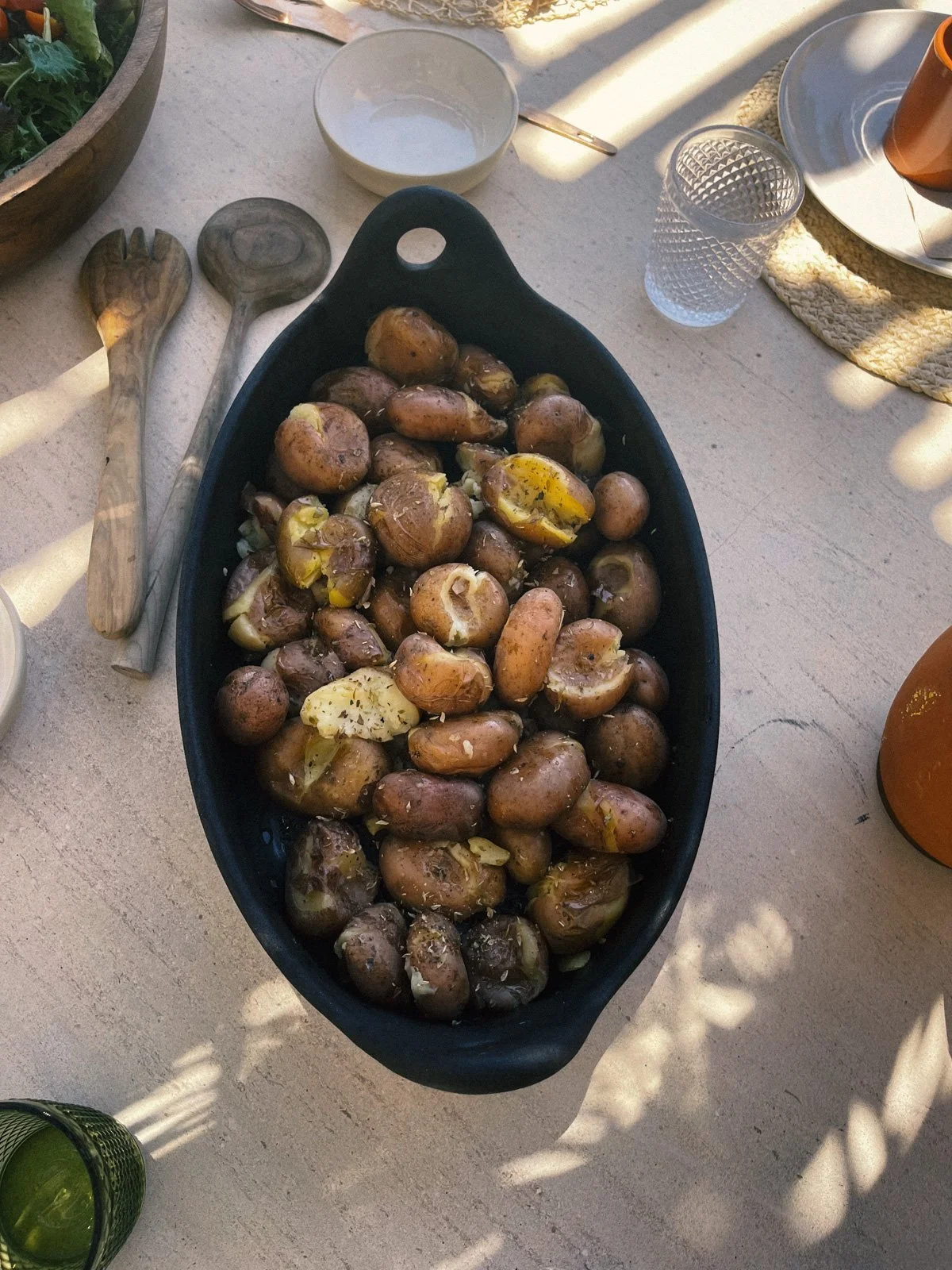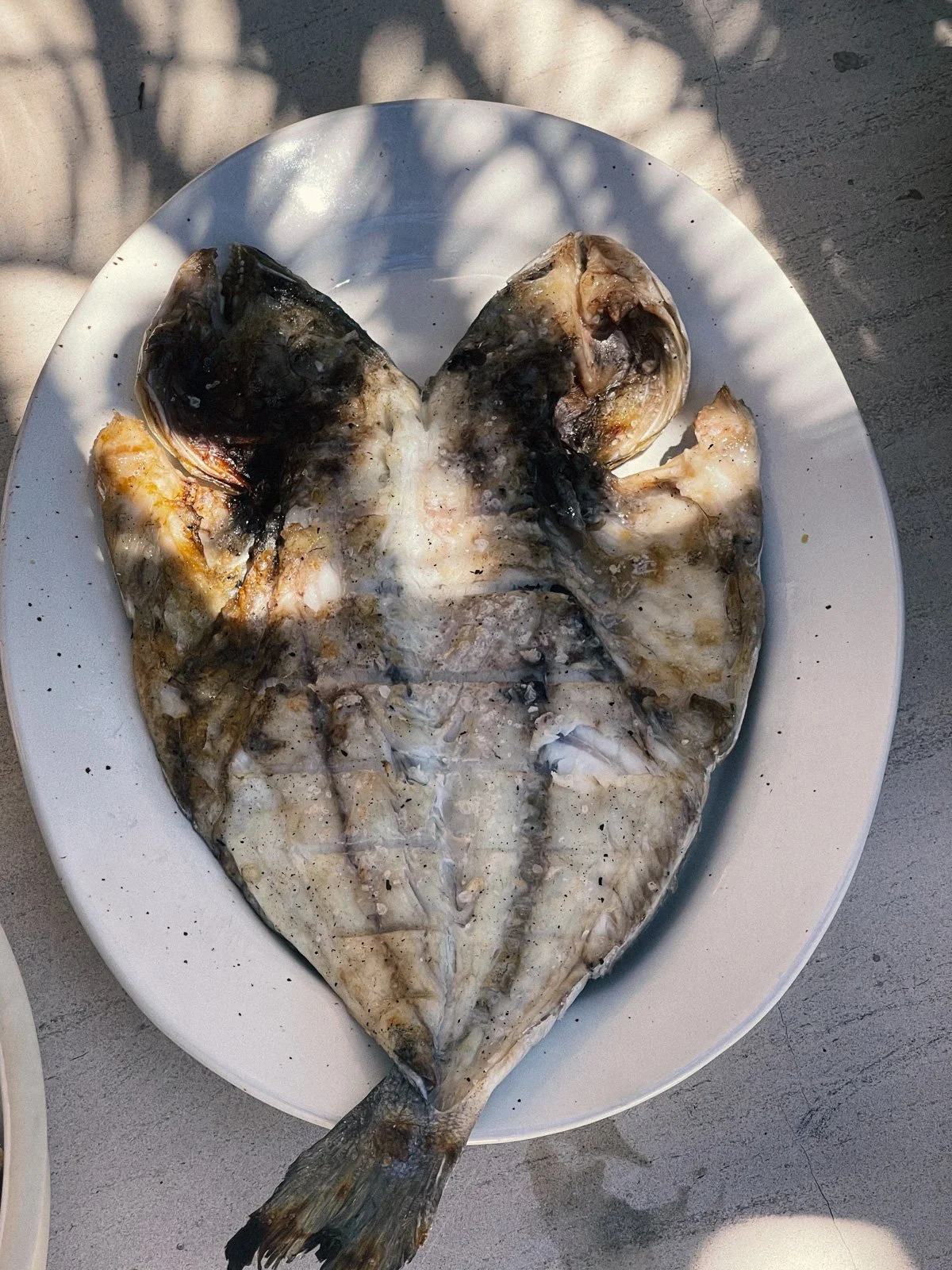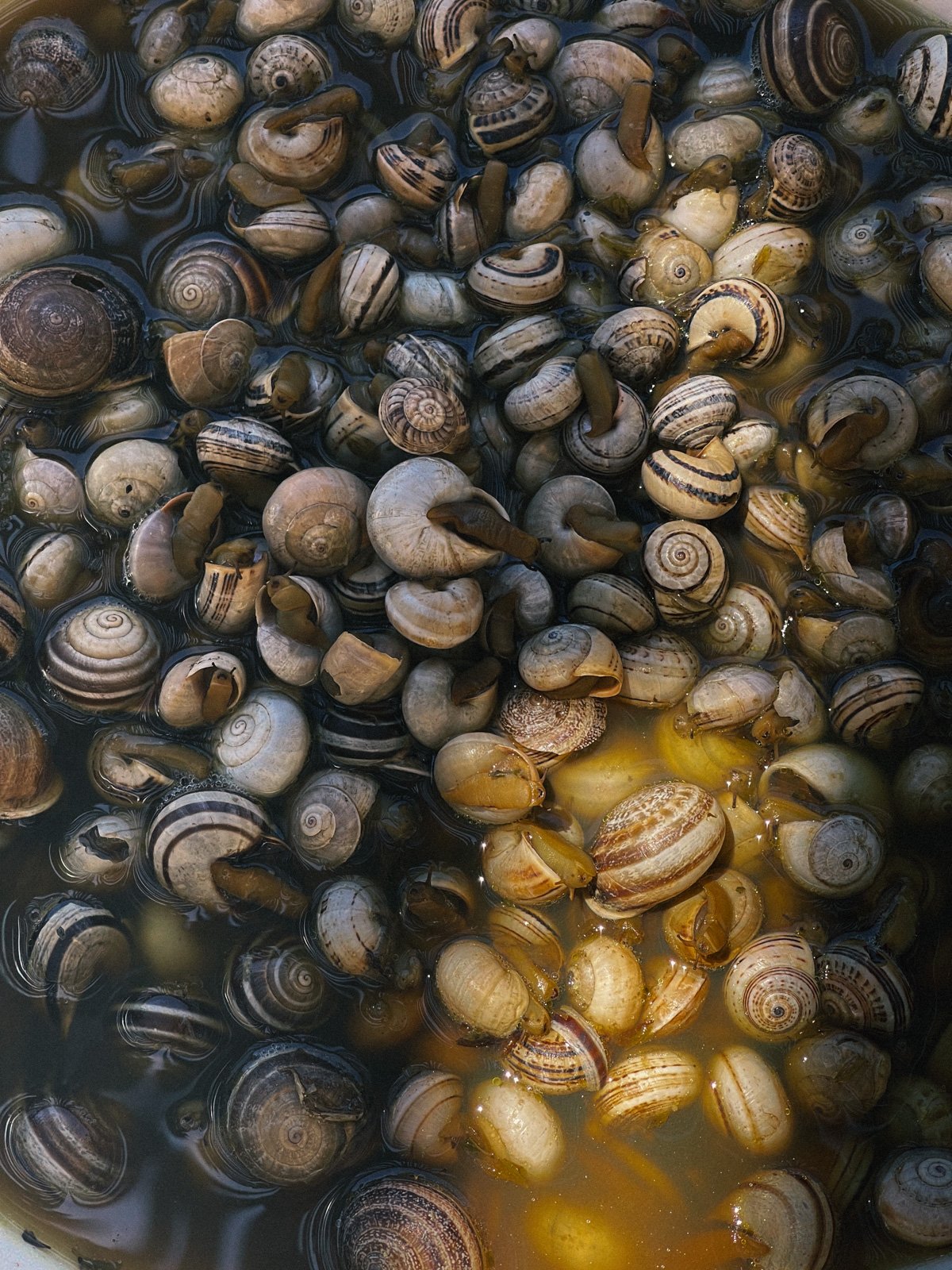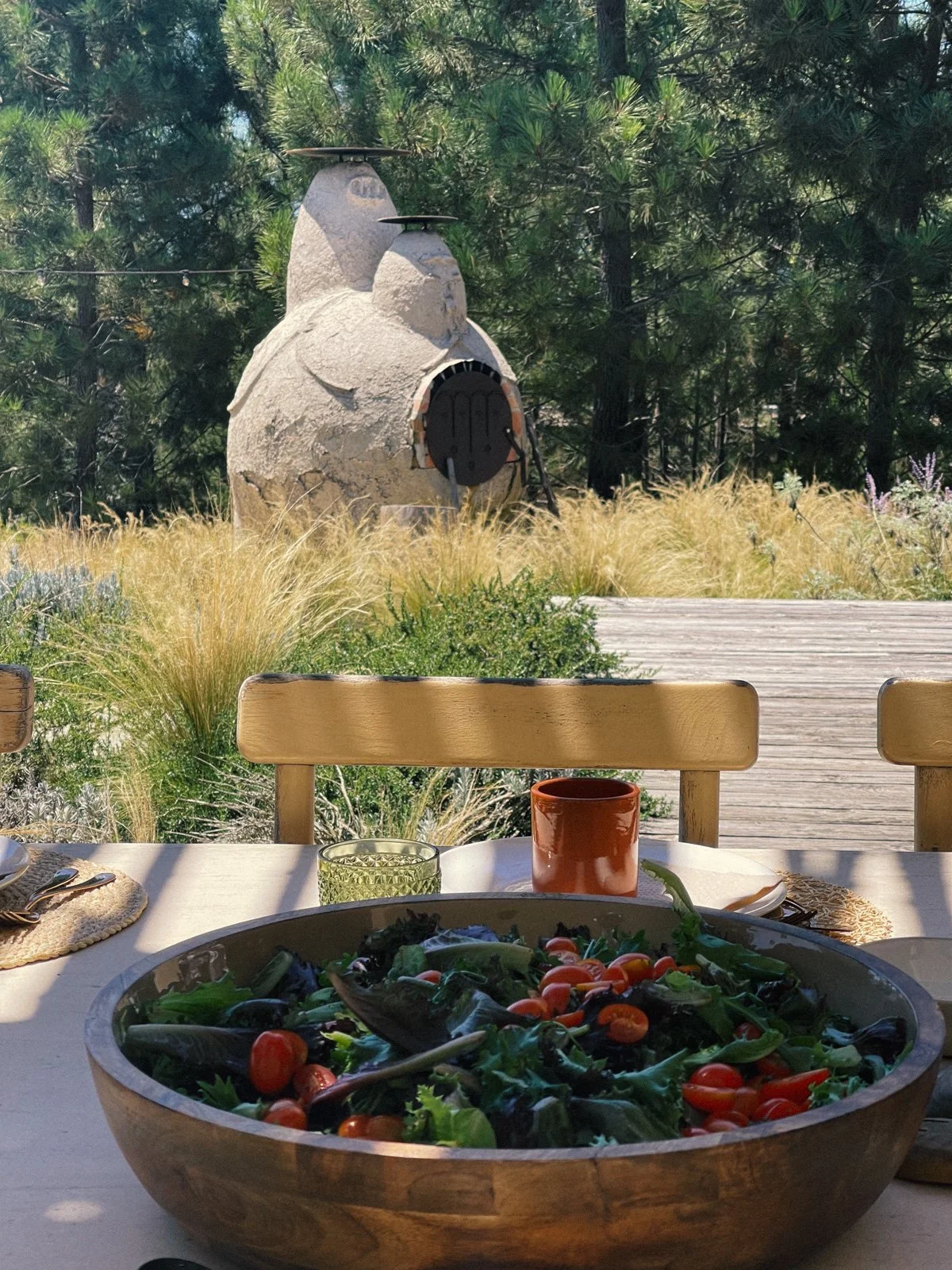Melides Art: low-slung modernism set in a pine-forest art park
The Why – Because time stretches when nothing shouts.
Melides Art is what happens when a place is edited, not branded. It’s a stay-mood you can live inside: homes that feel like pale rocks in a pine sea; art that turns paths into galleries; lunch as the day’s anchor; evenings written in crickets and pool light. Come for the architecture; stay for the way time behaves when nothing is shouting.
Arrival – A sandy road, a pine hush, and a first look that exhales
From Lisbon, the drive is pleasingly simple: head south across the Tagus and roll 90–100 minutes through cork forests and rice fields until the Atlantic starts to scent the air. Melides sits about 1 h 20–30 min by car depending on traffic and route—close enough for a weekend, far enough to feel elsewhere.
The estate reveals itself gently: pale volumes among umbrella pines, paths that crunch, light that pools. This is Melides Art—an enclave of around ten villas (with further homes planned) set inside a vast private site. It isn’t theatrical on arrival; it’s tuned. The closer you look, the more the edits register: the soft sand hue of the plaster, the way stairs read like sculpture, the recess of windows that give you shade and focus in the same move.
Setting – Between rice fields, dunes and Atlantic light
Melides is the quiet cousin to headline-maker Comporta—same coast, fewer crowds. Long, pale beaches and a lagoon, pine and cork oak, whitewashed villages set back from the shore. Over the last decade it has quietly attracted a design-minded crowd: collectors, architects, artists; restaurants and small hotels are catching up at a measured pace (Louboutin’s Vermelho and the architect-led Pa.te.os are the notable new-guard neighbours). The tone stays unhurried, agrarian, and deeply local.
Inside this frame, Melides Art works as a cultural hub as much as a place to sleep: outdoor galleries stitched into paths; a programme that privileges process and place. That blend—quiet domestic life punctuated by art encounters—is why a day here feels strangely productive even when you “do nothing.”
Hospitality – Private by design—but with the comforts you came for
Melides Art sits at the intersection of private residential and curated hospitality. Listings show 3-bedroom, 3-bath homes on ~600 m² plots with heated pools, sauna/steam, private beach access, horse riding, and an in-villa chef on call; inventory evolves (several units are marked sold), so availability is fluid and generally on-request. If you’re coming to stay, your best route is through trusted design agents or the estate’s contacts.
Prefer to book something in the same spirit while you test the Melides rhythm? Pa.te.os offers architect-designed houses above the lagoon with in-house dining/chef options; Vermelho’s Xtian turns lunch into a small ceremony (and anchors the area’s new-wave hospitality). Both sit within an easy drive of Melides Art.
The Interiors – Earth palette, deep reveals, and furniture that earns its keep
The Esteva i Esteva language translates Alentejo’s landscape into a domestic grammar—low, sand-coloured volumes, deep window seats, unfussy joinery, limewashed walls, cane, rattan and timber that patinate gracefully. Interiors run natural materials + earth tones, pulled taut by proportion rather than ornament. In some houses you’ll find sculptural exterior staircases that punctuate courtyards; inside, the layout centres on a shaded living-dining volume sliding to the pool terrace. It’s architecture as microclimate.
Design moves to notice (and copy at home):
Wide eaves and loggias: keep glare down, keep life outside longer.
Deep jambs and benches: windows become rooms; watch the pines without squinting.
A single, honest palette: stone, timber, plaster; one accent in textile or art.
Shadow as a material: let light do the decoration; the plan will feel richer by noon.
History Beneath – From fisherman country to design frontier, without losing the plot
Alentejo’s coast has always been about work before leisure—rice paddies, pine resin, cork oak, fishing. Melides, set 20 km south of Comporta, spent decades off the map, which is partly the charm; the current chapter pairs land stewardship with thoughtful architecture in small, precise gestures. Sources track Melides Art as an artist retreat and atelier cluster first, a residential park second—hence the outdoor galleries and the quiet current of cultural events.
The architectural authorship matters: Esteva i Esteva (Mallorca) bring Mediterranean pragmatism—simple volumes, climate-first thinking, texture over gloss. Across the project, Francisco Nogueira’s images capture that ethic: modest, calm, open to weather.
Atmosphere – The soundtrack is pine wind and pool water
Morning haze clears by late breakfast; the forest warms and the pool goes to glass. By noon the light turns caramelly under the pergola; cicadas pick up, the sea air folds in from the dune line, and shadows paint the floors. Evenings stretch—cooler, slower, with the pines tracing arabesques on the sand-coloured walls. It’s not performative luxury; it’s precision with restraint.
Lunch / Noon – The day’s sweet spot (and why you should plan around it)
Plan your main meal for lunchtime, not dinner. Pacing your day around midday pays off here:
In-villa lunch: Ask the in-villa chef to work with Alentejo produce—rice, tomatoes, clams, local fish—so lunch lands family-style on the shaded terrace while the pool throws light on the ceiling. Keep it mineral (a cold Verdelho; local Vinho de Talha if you’re curious).
Restaurant lunch: Book Xtian at Vermelho for 12:00–15:00—you’ll avoid dinner’s bustle, keep the rest of the day elastic, and eat when the room glows. It’s a refined but unhurried service, with a kitchen geared to the region.
Beach picnic: With private beach access listed among the estate’s perks, a noon picnic becomes a mood rather than a mission. Shade, salt, a long read, then back to the pool by two. (Confirm current access rules with your host.)
Midday is also when the outdoor art reads best: shadows are sharp; pieces change character every half-hour. Walk the paths while the breeze moves the pines, then step back into the cool to let it settle.
